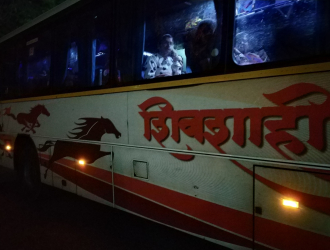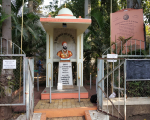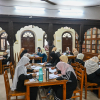The historical figure of Shivaji has traditionally been regarded as the warrior hero of Maharashtra. A society and culture has developed around him along with political identities such as the much-disputed Maratha category. Political leaders have appropriated and adapted Shivaji to influence their constituencies time and again. One can see Shivaji in images, statues, graffiti and symbols—the list goes on—in Pune, which was also the headquarters of Shivaji and of the Peshwa later.
Pune also has several small groups called mandals that organise the Ganeshostav (festival in celebration of Lord Ganesha) and Shivaji Jayanti (birth anniversary of Shivaji) in their respective areas. They display through their celebratory hoardings their bhakti (devotion) to Shivaji—his image is printed on hoardings as well as on jackets and T-shirts. The visual culture around the figure of Shivaji deifies him and makes him into a godly figure who is worshipped through his photos and statues and Aarti (devotional songs), particularly the one written by V.D. Savarkar, an Indian nationalist leader during the freedom movement.
This photoessay walks through the visual culture of everyday life with regard to the figure of Shivaji focussed mostly in and around the city of Pune.

















